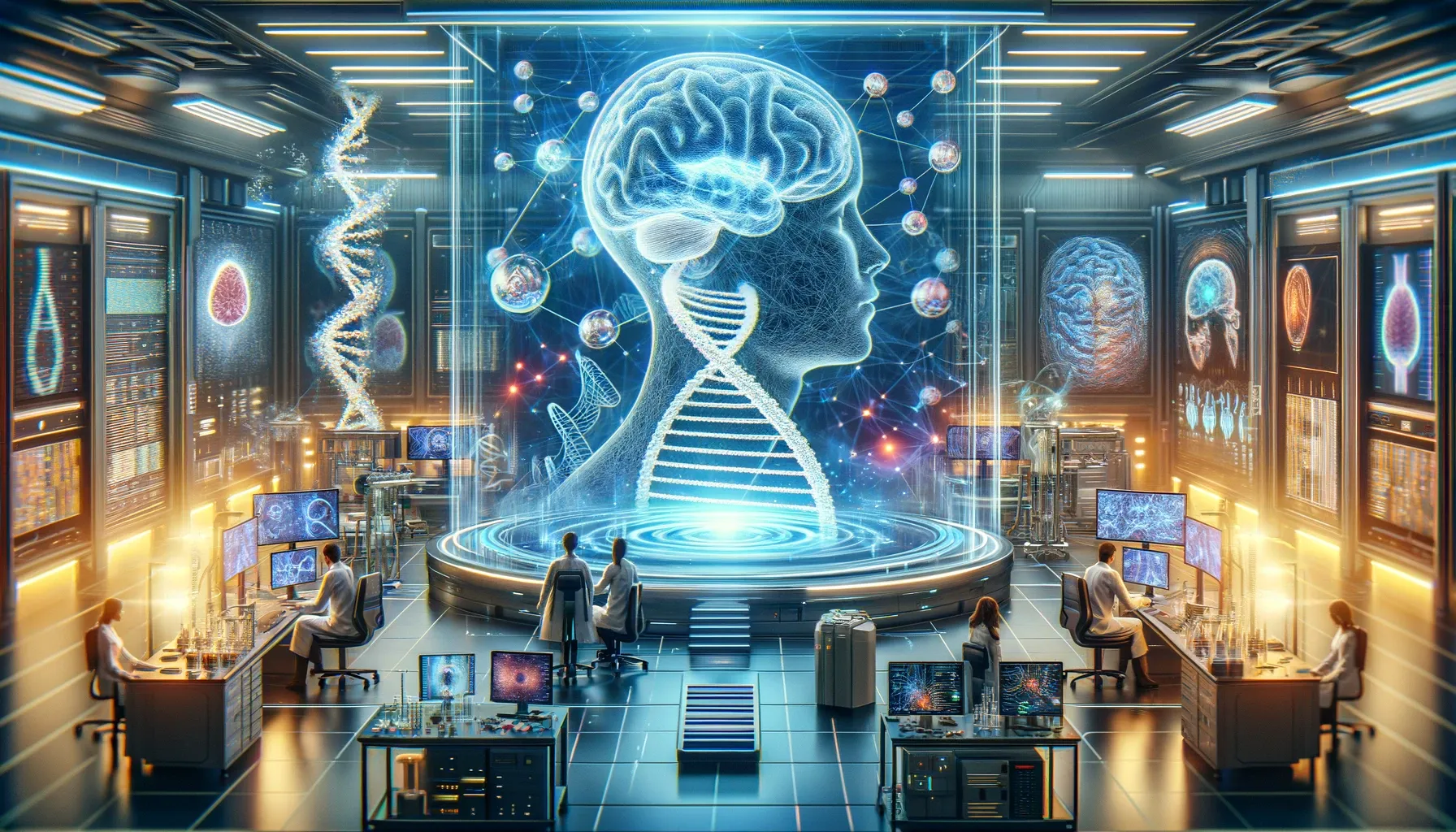Unlocking Life’s Code: The Journey from DNA’s Double Helix to the Forefront of Computing Innovation
Imagine stepping into a world where the very essence of life becomes the blueprint for the next revolution in computing. Picture a realm where the spiral ladders of DNA aren't just carrying the code of life but are also solving complex mathematical problems, storing exabytes of data, and
Imagine stepping into a world where the very essence of life becomes the blueprint for the next revolution in computing. Picture a realm where the spiral ladders of DNA aren't just carrying the code of life but are also solving complex mathematical problems, storing exabytes of data, and potentially diagnosing diseases before symptoms even manifest. This isn't the plot of a sci-fi novel; it's the burgeoning field of DNA computing, unfolding beneath the lenses of microscopes in labs across the globe.
At the heart of this revolution lies a simple, yet profound, realization: DNA is not just about genetics; it's nature's own way of storing and processing information. With billions of years of evolution fine-tuning this system, researchers are now asking, "Why not leverage this perfect storage medium for computing?"
Enter the scene at the Rochester Institute of Technology, where scientists have developed a microfluidic "lab on a chip." This isn't any ordinary chip. It's a platform that can perform neural network computations using DNA. Imagine this: a device so small yet capable of complex calculations, and it's all happening in a drop of liquid. This innovation is just the tip of the iceberg. It opens the door to computers that are not only more efficient but also more in tune with our biological systems.
Meanwhile, halfway across the world, a team of Chinese scientists has crafted the first programmable DNA computer. It's a marvel of modern science, capable of running billions of different circuits in a liquid machine. This breakthrough could one day lead to machines that diagnose illnesses or monitor environmental pollutants, all through the elegance of DNA.
But what makes DNA computing truly exciting is the possibility of programmable DNA-based gate arrays. Imagine being able to reprogram DNA to perform a myriad of tasks, from crunching numbers to diagnosing diseases, all within a framework that's billions of times more efficient than the best silicon chips out there.
Of course, the journey isn't without its hurdles. The slow pace of DNA sequencing and synthesizing is a challenge, but the promise it holds is titanic. The potential for DNA to store data dwarfs anything silicon can offer, and its efficiency could revolutionize how we approach computing, making it more sustainable in an energy-conscious world.
The annual International Conference on DNA Computing and Molecular Programming is where the magic happens, where minds from across disciplines converge to push the boundaries of what's possible. Here, the latest breakthroughs are shared, collaborations are forged, and the future of DNA computing is shaped.
So, as we stand on the precipice of this new era, let's marvel at the possibility. The very molecules that encode our existence might soon power the next generation of computers, blurring the lines between biology and technology. It's a testament to human ingenuity and a reminder that sometimes, the answers to the future's biggest questions are written within us.
Convergence of Minds: The Dawn of Biocomputing Harmony
Venture with me once more into the realm where the building blocks of life intertwine with the circuits of the future. Imagine a world not too distant from our own, where the fusion of DNA computing and the human brain is not just possible but is paving new paths for innovation, medicine, and technology. This narrative isn't born of science fiction but is being crafted in the laboratories and minds of today's visionaries.
In the laboratories where the future is being written, scientists work on the cusp of biological and electronic synthesis. They're not just asking "What if?" but "How soon?" regarding the integration of DNA computing with the human brain. This endeavor, once the domain of speculative fiction, now takes shape through the study of organoid intelligence (OI) and advanced brain-computer interfaces (BCIs).
Consider the human brain: a marvel of nature, capable of processing vast amounts of information with unparalleled efficiency and minimal energy. Now, envision enhancing this organic prowess with the precision and durability of DNA computing. This isn't about replacing the brain's functions but augmenting them, creating a symbiosis where biological and artificial intelligence converge.
The research into organoid intelligence (OI) hints at a future where 3D brain cell cultures become more computer-like, not just in processing capabilities but in their very essence. These advances promise a new generation of biocomputing technologies that are more energy-efficient and intimately connected with human cognition than anything we've seen before. Brain organoids, derived from pluripotent stem cells, serve as the bridge between the organic and the electronic, offering insights into neurodevelopment and potential applications in treating brain disorders.
Integrating DNA-based computing with the human brain presents a frontier brimming with potential yet fraught with challenges. This melding of biology and technology could revolutionize not just computing but our understanding of the brain itself. Imagine BCIs that don't just interpret brain signals but interact with them on a molecular level, offering new treatments for neurological diseases or enhancing cognitive functions.
As we stand on the brink of these breakthroughs, it's crucial to navigate the ethical implications with care. The prospect of enhancing or interfacing with the human brain brings with it questions about identity, privacy, and the essence of human experience. These conversations are as integral to the journey as the technological advancements themselves.
The fusion of DNA computing with the human brain represents more than just an advance in technology; it symbolizes a new epoch in human evolution. As we venture further into this uncharted territory, we do so with the promise of discovery, the challenge of the unknown, and the responsibility to proceed with wisdom. In this future, biology and technology no longer walk separate paths but are entwined, opening doors to possibilities once dreamed of and now within our grasp.





